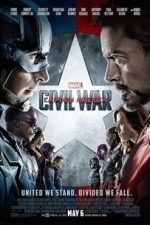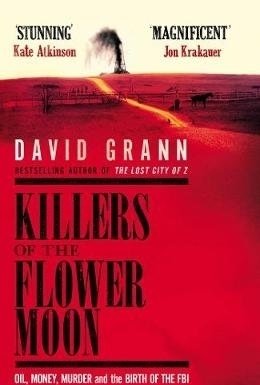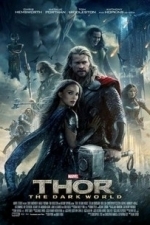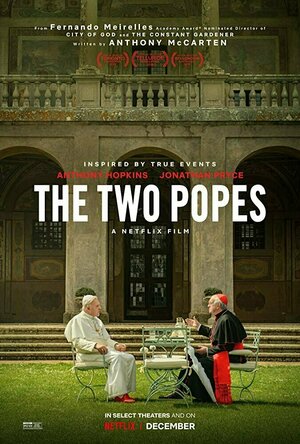Acanthea Grimscythe (300 KP) rated Highwayman in Books
May 16, 2018
In the wake of a plane crash, Karl Goodman finds himself in-between life and death - a sort of limbo that I felt was reminiscent of an episode of Supernatural where Castiel and Dean are fighting vampires in purgatory. I say this largely because of the whole Fog-World/forest atmosphere. In this surreal world, a murderer from centuries past is able to cross the lines between the worlds of the living and dead to continue visiting his reign of horror upon unsuspecting individuals. Guided by the Deans, who appear to be a set of reapers, for lack of a better term (or maybe ferrymen), and a young, comatose girl named Imke, Karl finds himself seeking out this murderous highwayman so that he can exact revenge for his daughter's death.
While I have a strong love for the supernatural and paranormal, I couldn't help but find myself confused more often than not by several aspects of the story. I am, admittedly, ignorant of the White Hart and the Green Man, but I like to think I'm a bit more versed in the many varieties of spooks. In fact, Saunders portrayal of a barrow-wight did not stray unreasonably far from its native draugr. What does baffle me though is how Saunders introduces these supernatural elements into his book. When I received Highwayman, I was expecting something dark and macabre that dealt with... well, with highwaymen. The main villain of the tale is precisely that, but the book itself is largely a ghost story. That isn't necessarily a problem, but it simply did not sit very well with me.
To further complicate the telling of the story, there are far too many differing points of view - five or six, total. (I can't remember if there was a part told from Mr. Dean's perspective.) This makes it hard to keep track of the passage of time, and whether or not that is intentional, I found it bothersome. For instance, at one point Bethany, Karl's wife, does something. Then, for several chapters, the story does not return to her. In fact, the disparity between returning to her point of view was so great that I actually thought that Saunders had forgotten about her.
One of the other issues that bothered me was the circumstances of Karl and Bethany's daughter's death. At first it is explained as a drowning, but then later we learn it was not. Apparently her murder was so horrid that Karl conveniently blocked the tragedy from his mind with a far more "rational" explanation, and to me this felt more like slapping a bandaid on a forgotten plot element than something that was done naturally.
At no point during my reading of this book did I feel any sort of emotion or attachment to any of the characters, and I found that to be extremely disappointing. The cast of Highwayman are not, in any way, extraordinary (well, not depth wise), and that made it harder for me to get into the book.
Overall, I didn't care much for Highwayman; however I will not let that discourage me from reading more of Saunders' work in the future. As part of the DarkFuse Reader's Group, I received an advance copy of this book in exchange for an honest review. I would like to thank DarkFuse, Craig Saunders, and NetGalley for this opportunity.
Movie Metropolis (309 KP) rated Captain America: Civil War (2016) in Movies
Jun 10, 2019
Then, DC tried to compete with Marvel in March with Batman v Superman: Dawn of Justice. It was fine, if far too long and lacking in any real drama. Now, Marvel is back with Captain America: Civil War. But can it break the superhero tedium that has started to settle in?
Steve Rogers (Chris Evans) is back and he is not happy. The titular hero, and the rest of our beloved Avengers clan, are asked to sign up to a UN treaty, designed to reign in their unsupervised power after a dramatic and deadly battle against terrorists in Nigeria. It turns out the Avengers lost the PR war and countries across the globe want blood – well them to back off a little at least.
Most of the fan favourites return in Civil War, with Robert Downey Jr proving once again why he was cast as Tony Stark/Iron Man all those years ago. He is a commanding presence and brings to the table some of the best one-liners outside a fully-fledged Iron Man film.
Elsewhere, Scarlett Johansson (Black Widow), Jeremy Renner (Hawkeye), Elizabeth Olsen (Scarlet Witch) and Paul Bettany (Vision) all return and despite the increasing number of characters all make their presence felt throughout the course of the film – something Avengers: Age of Ultron failed to do.
However, the film belongs to the characters that join the film and the Marvel Universe. Paul Rudd’s Ant-Man makes a truly exceptional appearance and features in Civil War’s most memorable scene – a brilliantly choreographed battle between two sides in a deserted airport.
And, the long-awaited “homecoming” of Spider-Man to the MCU is thankfully worth the wait. He’s been teased in the trailers and I’m pleased to say his screen-time is far greater than anyone could have imagined. Young Tom Holland’s portrayal of Peter Parker may need some time to settle in, we have a Spider-Man reboot to look forward to in 2018, but he makes a cracking first impression.
So, with all those characters it’s fair to say that Civil War should be renamed “Mini Avengers Assemble” as there’s far more at stake here than a simple Captain America movie. Directors Joe and Anthony Russo have created the film that Age of Ultron should have been and it’s a slight disservice to their incredible work that the film isn’t labelled as a full Avengers feature, despite the lack of Thor and Hulk.
The action is beautifully filmed and the locations are fabulous. From Africa to America and from Germany to London, nearly every inch of the world is touched upon in some way – yet it doesn’t feel disjointed.
But what makes Civil War stand out from all the rest is its human side. This isn’t a superhero movie that ends in a climactic battle against a faceless army, it explores the human impact of our characters’ actions and the emotion radiates from its heart.
Yes, it’s 20 minutes too long but apart from that, I can’t think of a bad word to say. It has reinvigorated a genre that was starting to turn a little stale. Bringing together a set of characters that against all the odds gel together so well makes it feel as fresh as Iron Man did way back in 2008.
If this is the magic the Russo brothers can work at Marvel, Avengers: Infinity War should be something truly special indeed. X-Men: Apocalypse, you have your work cut out.
Oh, and wait right up until the end credits for something very special indeed.
https://moviemetropolis.net/2016/05/01/mini-avengers-assemble-captain-america-civil-war-review/
Hazel (1853 KP) rated Killers of the Flower Moon: The Osage Murder and the Birth of the FBI in Books
Dec 7, 2018
It is well known that throughout history, facts have been omitted from history books. Written accounts of events ostensibly make important figures and countries appear to be in the right, whereas reality reveals otherwise. One such exclusion is the fate of the Native Americans inhabiting the southern states at the beginning of the 1900s. Children are brought up to believe the stories that “Red Indians” are bad and the cowboys are good, but this was unlikely the case. David Grann has researched into a particular period of Native American history that most people may never have heard of.<I> Killers of the Flower Moon</I> reveals the horrors innocent people faced at the hands of perfidious criminals.
The majority of the book is written as a third person narrative, recounting the lives of some of the members of the Osage Indian Nation in Oklahoma. White people, believing themselves to be superior, had forced the natives off their homelands and onto rocky, unwanted ground. What they did not anticipate, however, was the abundance of oil residing beneath the surface. The Osage went from being oppressed to being the wealthiest people in the state. Full of avarice, the whites were not going to let them get away with this fortune for long.
David Grann takes a particular interest in Mollie Burkhart, an Osage member with a white husband. Mollie had three sisters, but within a few short years they were all dead, and so was her mother. Believing they had been murdered, Mollie fears for her life. Other Osage members were also being killed, as well as those who tried to investigate the spreading slaughter. However, the case remained stubbornly unsolved.
Nevertheless, there was still hope for Mollie after the arrival of Tom White, an agent of the soon to be known as Federal Bureau of Investigation (FBI). Determined to get to the bottom of the so-called Reign of Terror, Tom and his team carefully analyse the behaviours and motives of the disingenuous citizens, narrowing down the suspects until eventually finding their duplicitous killer.
Learning about this unknown period of history is eye opening and offers a completely new view on the relations between whites and Native Americans. It was a time of prejudice and racism, not unlike the attitude towards black people emphasised with the civil rights movement in the mid-1900s. Greed was a significant motivator, particularly where making money was involved. But, David Grann does not stop here.
The final section of <i>Killers of the Flower Moon</i> is written from the author’s perspective. As a staff writer at <i>The New Yorker</i>, the evidence of the Osage murders case intrigued David Grann, but he was concerned about some unresolved holes in the story. Determined to uncover the truth, Grann conducted his own research to discover the culprits behind the undocumented murders unrelated to Mollie Burkhart’s family. What he stumbles on highlights the severity of the dark fate the Osage Indians were threatened with.
Despite being written as a narrative, it is obvious that <i>Killers of the Flower Moon</i> is a work of non-fiction. It lacks emotion and character insight, however, since it is not meant to be a fabricated story, these elements are not required. Instead, it shocks and disturbs the reader with its unbelievable truths.
An extensive biography proves the authenticity of David Grann’s revelation. With the reinforcement of FBI files, jury testimonials, statements, court transcripts, letters, telegrams, diaries and confessions, Grann produces a strong historical record of events that should not be glossed over. Without authors and books such as <i>Killers of the Flower Moon</i>, people will blindly go around believing falsehoods. The truth needs to be discovered, and readers can start by reading this book.
Gareth von Kallenbach (980 KP) rated Thor: The Dark World (2013) in Movies
Jun 19, 2019
“Thor: The Dark World”, is poised to carry on the success of the Marvel film franchise as it successfully mixes action and character form the rare sequel that is better than the film that spawned it.
Chris Hemsworth once again stars as the title character who has been spending his time clearing up discord on the planets of the Nine Realms following his outing with The Avengers.
With peace at hand, his father Odin, (Sir Anthony Hopkins), believes the time is right for Thor to prepare for his reign as king of Asgard and protector of the realms.
Thor is not ready to embrace his destiny as his mind and heart are focused on Jane Foster (Natalie Portman), we has not seen since the events of the first film. His father warns him that a mortal is not suited to be his future queen and suggest that his fellow warrior Sif (Jaimie Alexander), would be far more suitable.
To further complicate matters Thor’s treacherous brother Loki (Tom Hiddleston), is seething at the prospect of spending eternity in captivity for his past crimes which only furthers his desire for power and revenge.
While all of this would be enough to keep Thor very busy, a new threat has arisen from the past that threatens to destroy the known universe. A powerful force known as the Aether which had been hidden by Thor’s grandfather has emerged and is drawn the attention of a Dark Elf named Malekith (Christopher Eccleston), who has been hiding away for centuries from those who believed him to be dead.
Malekith wants to take advantage of a pending convergence of the realms to use the supernatural power for his own purposes and in doing so destroy and subjugate all those who are before him. Fate intervenes and brings Jane and Thor together again just as the enemy forces arrived to ransack Asgard.
Faced with a battle against time not only to protect his beloved homeland but to save the known universe, Thor must work with his treacherous brother Loki in a race against time to save the day.
There are plenty of action sequences that follow and the visual effects are quite good even though the film is presented in converted 3-D after being shot in a standard format. The leads are fantastic and truly seem to have a grasp of their characters and the supporting work especially that of Kat Dennings much-needed comic relief is a very nice mix.
The only issue I had with the film other than the converted 3-D, was that the enemy while menacing did not seem to be one of the larger-than-life enemies that one has come to expect from a Marvel film. While certainly dangerous and menacing, there almost seemed to be an air of and confidence about the character as it was clear that he was simply biting off more than he could handle with the forces that were available to him.
That being said the film was extremely enjoyable as were the two bonus scenes that play during the middle of and the end of the credits.
While it may not went over box offices to the level of the two previous Marvel outings, Director Alan Taylor keeps things moving at a steady clip and the film nor the characters do not overstay their welcome.
With another Avengers movie on the horizon and a promise that Thor will return, fans can definitely enjoy this latest offering and look forward to the future for this promising series.
http://sknr.net/2013/11/08/thor-the-dark-world/
Debbiereadsbook (1617 KP) rated Digging Deep (Digging Deep #1) in Books
Aug 13, 2019
I want to just say a few words about this book, cos if I let myself have free reign, the review might be as long as the book!
Outstanding!
Brilliant!
Best book of the year!
Drake is a midwife with more than a few problems, most of them centring around his Crohn’s. When he gets arrested for using the loo, Caleb is the arresting officer and is immediately and totally smitten with Drake. Drake, though, holds Caleb at arm's length and then some. Making sure Caleb knows exactly what he is getting into with Drake is the only way to make Caleb see that Drake is not boyfriend material. But Caleb? Batchelor that he is, he doesn’t back down from Drake’s all doom and gloom and it takes a flare up for Drake and a shooting for Caleb to make both men see that they are perfect for each other.
So, picture the scene. It’s miserable out, you’ve a glass of wine, and an early night and a new book to start. Bear in mind, you have to be up at 6am for that darn day job and it is already after ten.
And the next thing you know, the book is finished, the wine sat untouched, it’s 3am and you just put your kindle down and go “oh.my.god”
There are no other words that floated in my brain when I finished this book, none at all. All I could think was “oh.my.god” just that!
And trust me when I say, that is a very VERY good thing!
Drake is a prickly sort, he’s a male midwife, he’s gay and he has a life altering condition that requires a huge amount of adjustment for him, let alone anyone else. Caleb is happy, plodding along with his very uncomplicated life. And Drake knocks Caleb for six, quite literally. Drake also pushes Caleb away so darn hard, I felt it. But Caleb, he’s a stubborn sort, and when Drake wants wooing, Caleb woos! Oh yes, that boy does wooing beautifully!
There is a huge, massive, MAHOOSIVE amount of talk about what Crohn’s means to Drake and what that would mean to a prospective partner. And really, it is absolutely needed here. Caleb needs to know, right down to the itty bittiest detail what it means to live with this disease, and what Caleb should expect. And Caleb?? Caleb laps it all up and throws the hole darn pile of poop right back at Drake!
The level of research into Crohn’s is amazing and either the author worked her bloody socks off, and/or has first hand experience, because it shows! There is a lot of information, yes, but the way Drake delivers it to Caleb, it’s all absorbable for the lay person to take in.
I loved these two! So very different, but so very matched. They are funny in places, and deeply emotional. Sexy in places, and downright filthy too.
Oh I could rant all day about this book, I really could!
This is only the THIRD book that Hogan has written, and the second I have read. I need more! I really do! Cos if Hogan can deliver THIS level of writing after only 3 books, I’ma on the end of the next one, oh yes, yes I am!
So, in case you did NOT get how I felt about this book, and ya’ll know I’m all about my book feelings:
This is my outstanding book of the year!
I’ve filed it on my “Masterpieces” shelf too.
And as if I could give it anything other than:
5 stars
**same worded review will appear elsewhere**
Darren (1599 KP) rated The Two Popes (2019) in Movies
Dec 20, 2019
Story: The Two Popes starts with the death of Pope John Paul II, the Vatican must elect a new Pope, bring the Cardinals from around the world together to go through the voting system, one the world is waiting to hear the news. Cardinal Jorge Mario Bergoglio (Pryce) and Cardinal Joseph Aloisius Ratzinger (Hopkins) are the favourites to wise to the spot, with Ratzinger becoming Pope Benedict.
Jump forward to 2012, Pope Benedict is involved in a scandal, which sees Jorge return to Rome hoping to be granted his retirement. Pope Benedict refuses his request, as the two clash on their beliefs, with Jorge wanting to see the church move to the future, while Pope Benedict believes the church should never change.
Thoughts on The Two Popes
Characters – Cardinal Jorge Mario Bergoglio is from Argentina, he has always bought the people together, he sees the church needing to not only let the future in, but embrace the changes they could never have considered because of their beliefs, he is one of the two challengers voted for to become the next Pope before stepping away from the votes. Years later, he wants to retire and isn’t getting answers, he confronts the pope, wanting to get answers, until he learns the true reason for their meeting. Cardinal Joseph Ratzinger was always meant to replace Pope John Paul II, he wins and becomes Pope Benedict. His reign will see him facing scandal before he decides to make a massive decision, one unheard of in the church. He has always believed in follow everything the church has before, which is why he gets challenged the most. We only meet a younger version of Jorge as we see his journey to rise to Cardinal in Argentina, while anybody else is usually just showing the two around.
Performances – Jonathan Pryce and Anthony Hopkins give two of the greatest performances of the year, the two legends of the industry shine carrying the film with their performances through the film.
Story – The story here follows the close election of a new Pope and how the Cardinal who stepped out of the race he never wanted to be in, is the one person that the new Pope can turn to in his time of need to save the church from a scandal which could destroy it. This is one of the most interesting and engrossing stories you will see, it shows a behind the curtain look at how the church operates, with minds that believe in a God, even if they do follow different beliefs with how they can connect to more people. We do get to learn how Jorge was given his chance in the first place, had experiences that Pope Benedict never went through to get to his position. The idea that this is a conversation between two religious men with differences, it shows how people can disagree without needing to turn into an ugly fight for no reason, they can respect their differences.
Biopic/Comedy – The biopic side of the film shows the private conversation between two religious figureheads that went through to make one of the biggest decisions in the church’s history, which is also done in a comedic way, where we get to see the two have a joke along the way.
Settings – The settings are beautiful from the country house to how the Vatican is recreated to make us believe we are right there with the Popes.
Scene of the Movie – The truth conversation.
That Moment That Annoyed Me – Not hearing the confession.
Final Thoughts – This is an acting masterclass from two of the greatest actors Hollywood has seen, it highlights the big change the church would take and how to have a conversation where both sides disagree, but accept the difference of opinions.
Overall: Acting Masterclass.

Daily Shopping Stories
Education and Games
App
Welcome to Daily Shopping Stories, the most exciting, fun-filled animated shopping center ever! Buy...

Contract Killer: Sniper
Games and Entertainment
App
You are a master assassin, hired to infiltrate secure locations and eliminate high-profile targets....

Infinity Blade II
Games and Entertainment
App
Join our new forums: https://www.epicgames.com/infinityblade/forums/ **2011 IGN "Mobile Game of the...
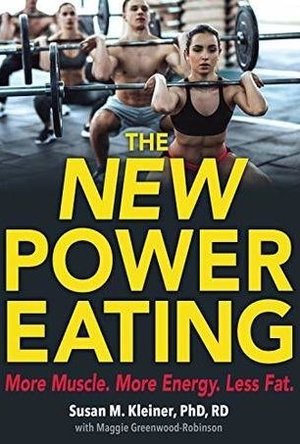
The New Power Eating: More Muslce, More Energy, Less Fat
Book
Transform your body as you build muscle, lose fat, and maximize performance with The New Power...

